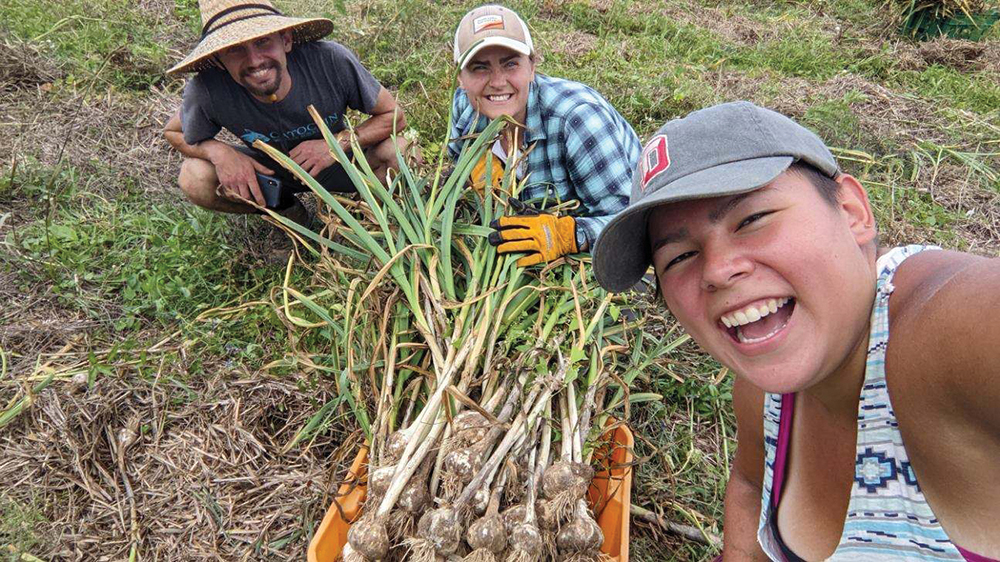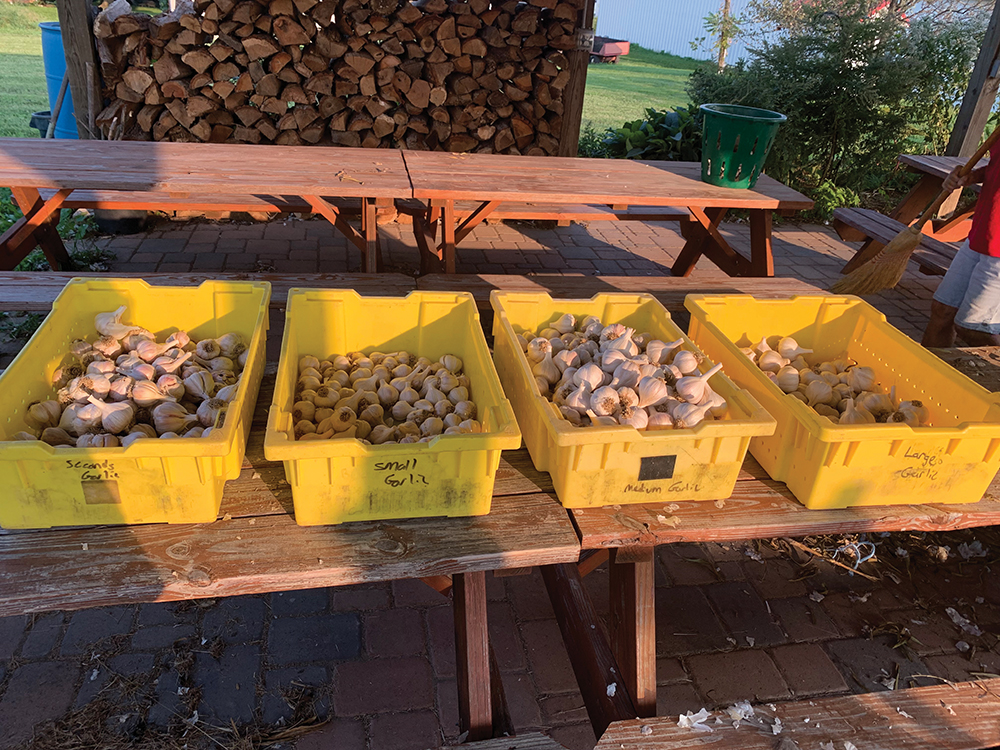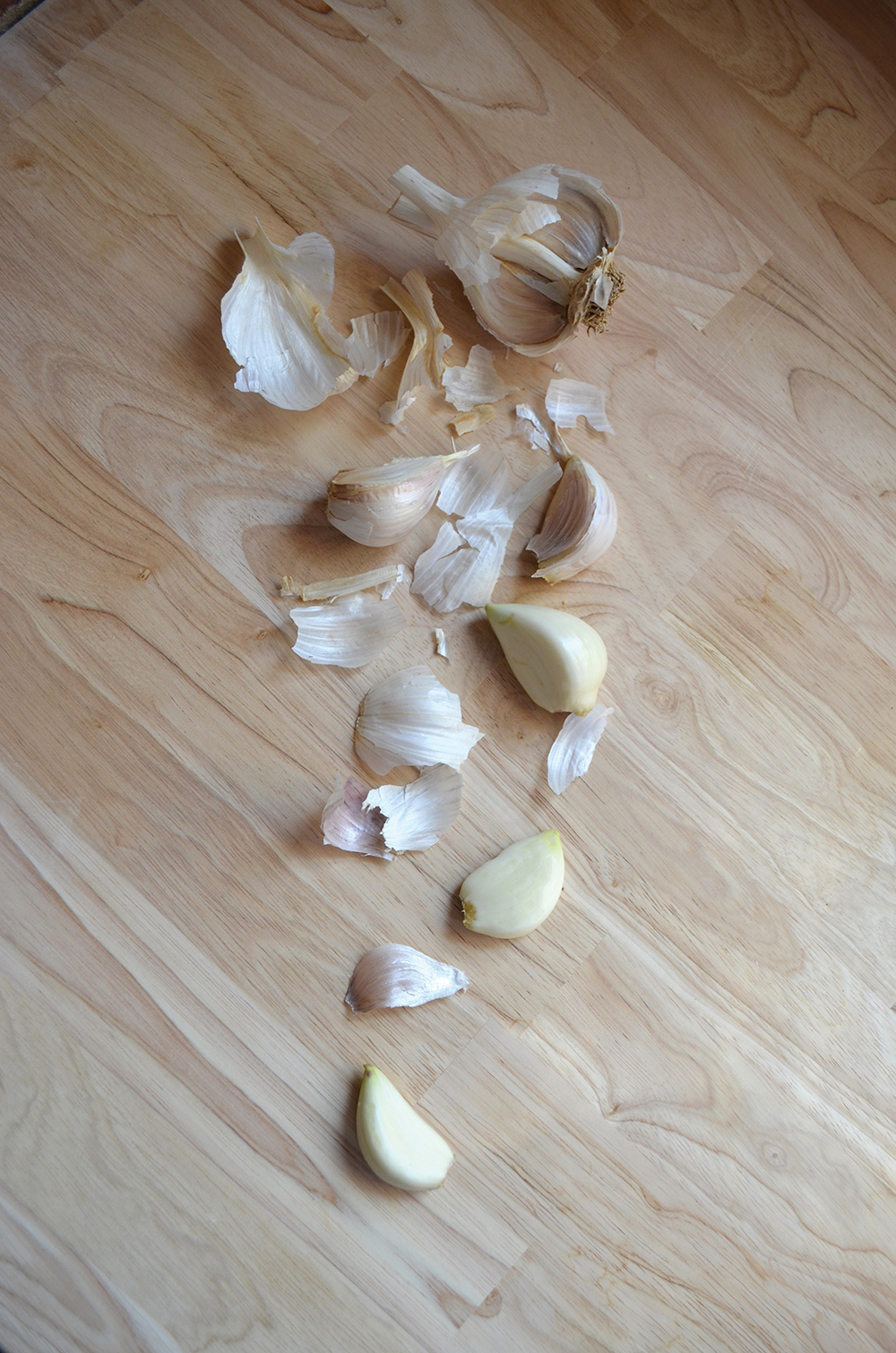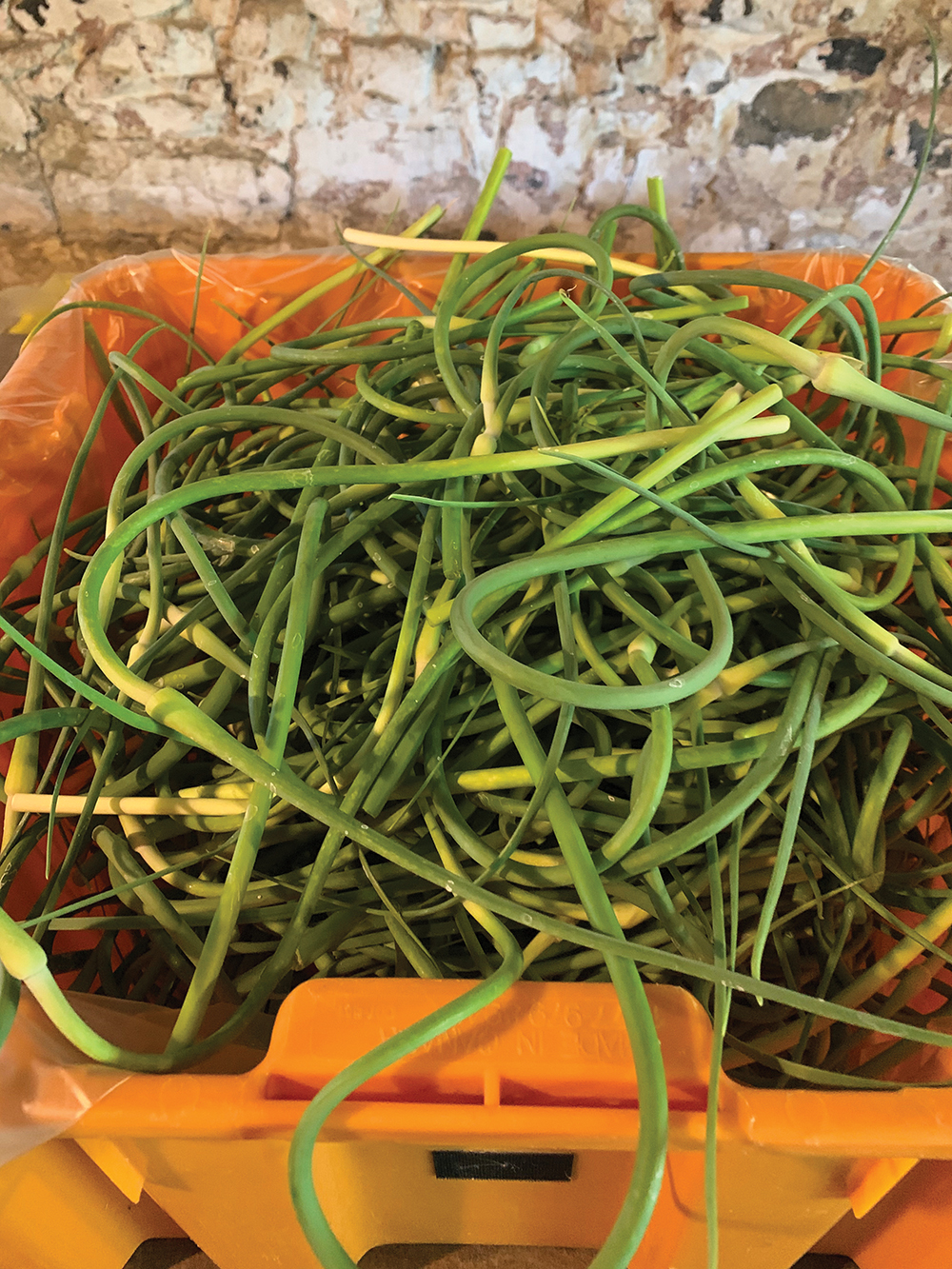Use garlic scapes and cloves to make delicious recipes.
By Jennifer Cisney
Garlic tends to provoke strong opinions. Some crave the unique taste it adds to recipes, while others dread the pungent side effects. Whether you love garlic or avoid it, these innocent-looking papery bulbs pack powerful flavor and tremendous health benefits.
The Fulton Farm at Wilson has been growing garlic since its inception. Each October, students and volunteers from the community help plant hundreds of garlic cloves. The farm grows a hardneck variety more suitable to our growing area. Over winter, the rows are heavily mulched with straw. From May to June, the flowering parts of the plant, known as scapes, are removed to initiate garlic head formation. Scapes can be used like fresh garlic, and Wilson’s dining hall likes to pickle them. By July, the garlic is ready to be harvested. The garlic is sorted, bundled, and hung to cure in the barn. (Garlic can be stored for months in a cool, dry spot.) About 20% of the garlic is saved for replanting in the fall, while the rest is sold or kept for campus use.
Today, China produces 75% of the world’s garlic supply. If you prefer to buy domestic garlic, you can tell the difference, as Chinese garlic has the roots chopped off to cut down on shipping costs and contaminated soil. Domestic garlic typically has its roots intact. Of course, if you buy your garlic from Fulton Farm, you know you are getting authentic, naturally grown garlic with the freshest, fullest flavor.
Garlic Facts
There are 450 types of garlic.
Garlic is actually a flower — part of the lily family.
Garlic is native to Asia and was used by ancient Egyptians for cooking and medicine.
Garlic can be used as a pesticide, and you can make glue from garlic.
California grows 90% of the garlic in the US.
The average yearly consumption of garlic per person is two pounds.
Garlic can be used as a dietary supplement for heart conditions, high cholesterol, and high blood pressure.
Garlic has shown potential in reducing cold symptoms and even preventing colds and flu.
It is thought that because of the history of garlic’s use in medicine, including as a mosquito repellent, Bram Stoker chose garlic as a vampire repellent in his 1897 book “Dracula”.
Pickled Garlic Scapes
INGREDIENTS
About 25 garlic scapes/about a half pound
1 cup apple cider vinegar
1 tbsp sugar
2 tbsp salt
1/2 tsp black peppercorns
1/2 tsp dill seeds
1/2 tsp mustard seeds
Sterilize two pint jars.
Trim any dead ends off the scapes. Curl them into the jars and add the peppercorns, dill seeds, and mustard seeds.
Mix vinegar, water, sugar, and salt in a pot and bring to a boil while stirring until the sugar and salt are dissolved.
Pour the hot brine into the jars over the scapes while leaving a half inch of space at the top of the jar.
Let the jars cool, then add the lids and place in the fridge for about four weeks before eating.
Garlic Scape Pesto
INGREDIENTS
About a dozen garlic scapes
1 cup pine nuts
1 cup parmesan cheese
1 tbsp lemon juice
Pinch of salt
Pinch of pepper
1 cup olive oil
Trim any dead ends off the scapes, then add them to a food processor. Add the pine nuts, cheese, lemon juice, salt, and pepper.
Pulse until blended, then with the food processor running, slowly add the olive oil until all is blended.
Store in a jar in the fridge or freeze.
Easy Roasted Garlic
INGREDIENTS
3 garlic heads
1 tbsp olive oil
Pinch of salt
Heat oven to 400 degrees.
Peel off the outer paper skin of the garlic. Cut the top quarter inch off each head of garlic.
Place each head of garlic on a sheet of aluminum foil. Drizzle with olive oil and sprinkle with salt and pepper. Fold foil up over each head of garlic into a little packet.
Bake in the oven for 45 minutes.






